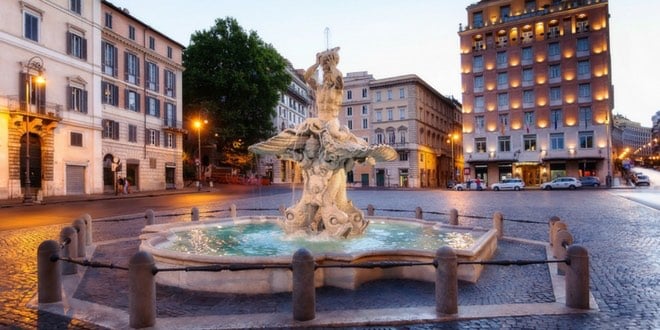How many monumental fountains are there in Rome?
The fountains of the capital are numerous, and many of these are wonderful, elegant and majestic. Rome is a city where water abounds and these magnificent works of art, especially Renaissance and Baroque, have also become famous thanks to the cinema, so much so that they are counted in films, novels, documentaries and symphonic poems (famous that of Ottorino Respighi, entitled “The fountains of Rome”). In few cities in the world there is such a concentration of such monumental fountains. But how many are they exactly?

The ancient Romans attributed great importance to water (and then also the Popes, who always brought a supply of Roman water when they traveled): think of the fountains but also of the majestic aqueducts and the grandiose baths, places of social and crucial work in those times (a bit like our shopping malls now, of course in the pre-Covid-19 era).
The sources were born to collect the spring waters and slowly spread throughout the territory.
Starting from the Renaissance they began to become gigantic and beautiful: real monumental works of art.

The Roman fountains are over two thousand (not counting the fountains, the famous “nasoni”).
“The fountains are enough to justify a trip to Rome”, or “The fountains are enough to justify a trip to Rome”, wrote and supported the great romantic poet Percy Bysshe Shelley 8 who among other things is buried in Rome in the cemetery of the Poets and of the Artists).
These that we are going to describe are among the most beautiful, but there are also curious and little known ones, such as the Fountain of Books, that of the Artists, the Fountain of the Botte and that of the Pigna, the Fountain of the Cannon Ball, that of the Tiare and the Fountain of the Terrina.

Trevi Fountain. It is the most famous fountain among those in Rome. In Baroque style, the Trevi fountain is located in the square of the same name. Unforgettable in Fellini’s “La Dolce Vita”.
Barcaccia Fountain. In Piazza di Spagna, at the foot of the Spanish Steps, one of the most famous fountains in Rome. The barcaccia fountain was built between 1626 and 1629 by Pietro Bernini.

Fountain of the Four Rivers. This Baroque fountain with the large obelisk adorns Piazza Navona and is the work of Gian Lorenzo Bernini.

Fountain of the Turtles. In the Sant’Angelo district, in Piazza Mattei, there is the fountain of the Turtles, built between 1581 and 1588 on a project by Giacomo Della Porta.

Fountain of the Lions. In the center of Piazza del Popolo stands this work created between 1814 and 1828 by Giuseppe Valadier.
Triton Fountain. One of Gian Lorenzo Bernini’s masterpieces stands in Piazza Barberini. Commissioned by Pope Urban VIII Barberini, the fountain was built between 1642 and 1643.
The fountain of the Naiads. In the center of Piazza della Repubblica, once Piazza Esedra, stands this 1901 work by the sculptor Mario Rutelli.
The fountain in piazza della Rotonda. Made by the sculptor Leonardo Sormani, based on a project by Della Porta, at the end of the sixteenth century, this fountain is located in the square of the same name, right in front of the Pantheon. The obelisk of Ramses II was added in 1711.
Fountains of piazza Farnese. In the square of the same name there are two fountains which have as their base two basins that were brought from Piazza San Marco to Venice at different times, although it is believed that they originally came from the Baths of Caracalla.

